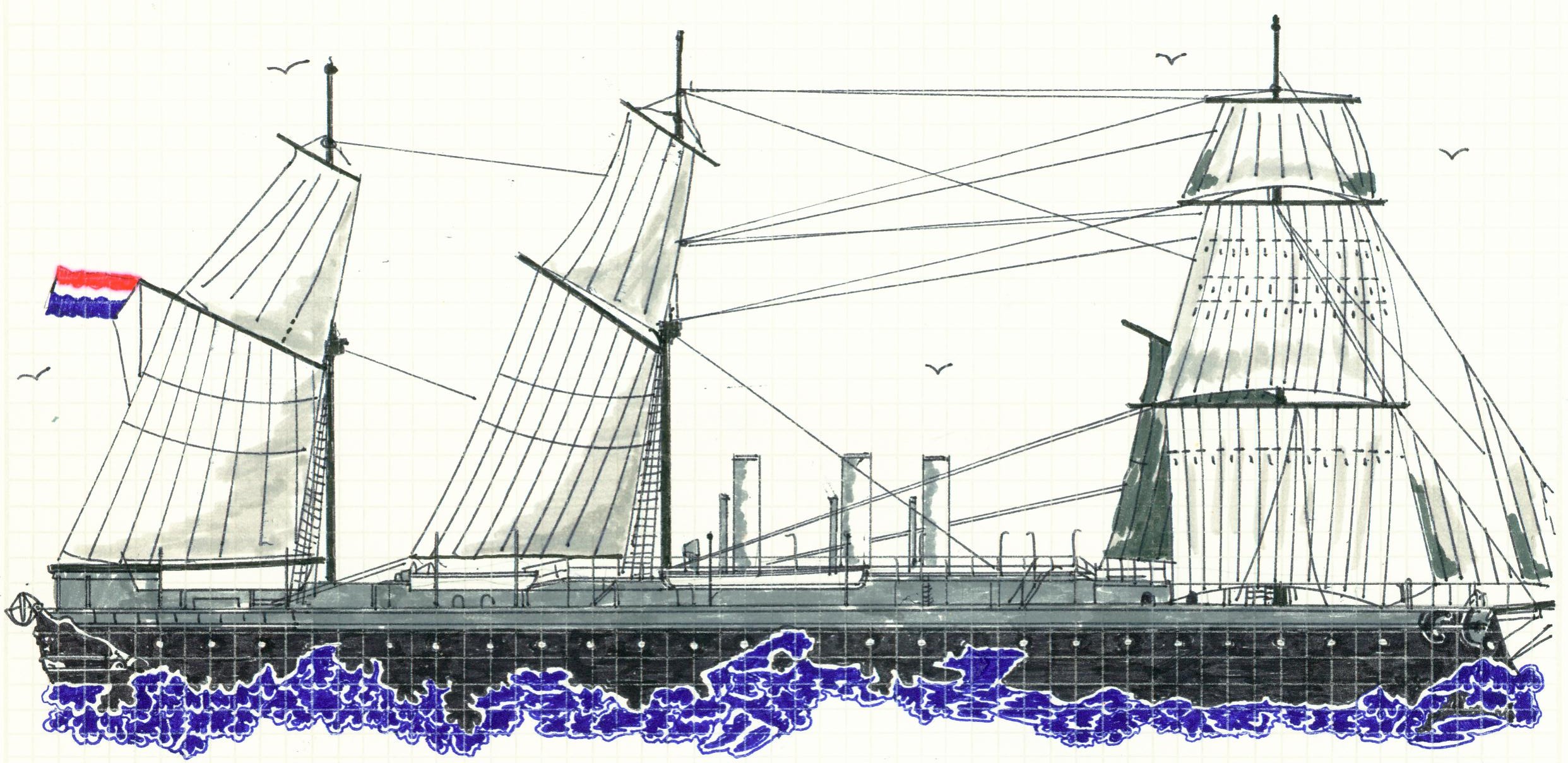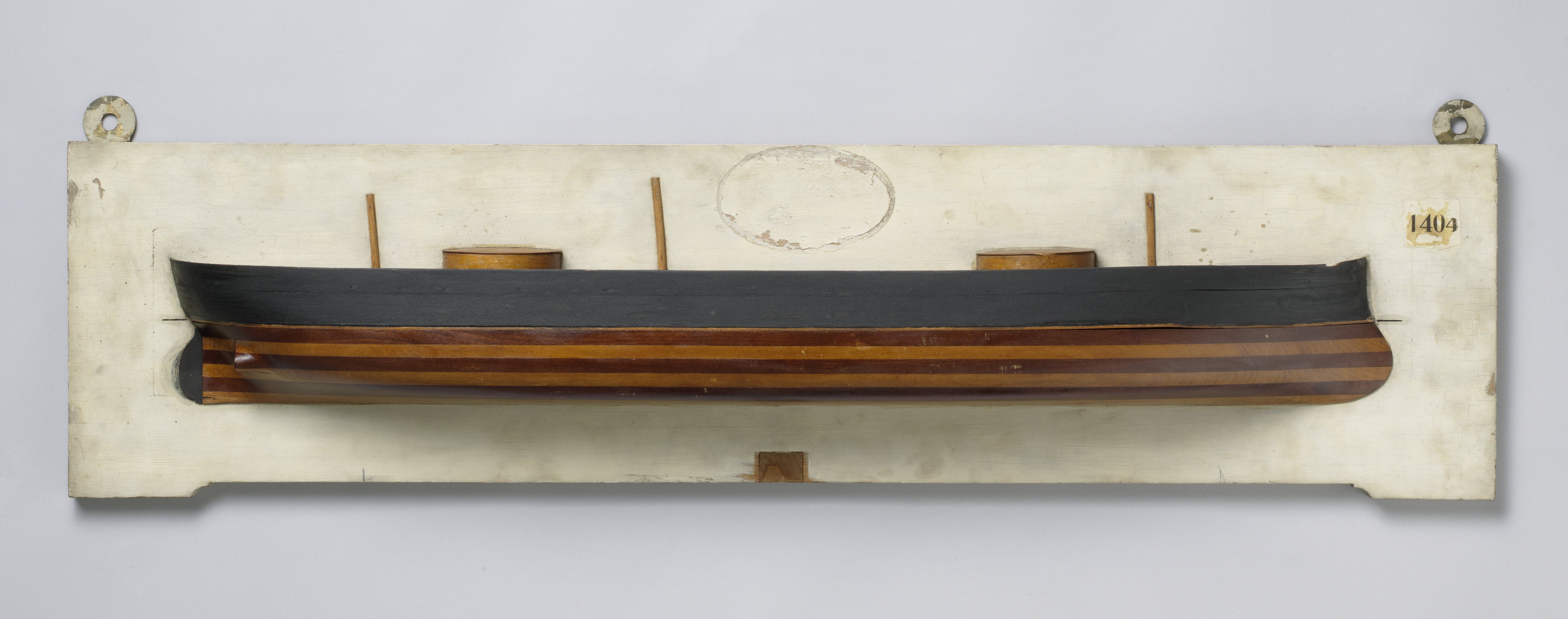Model Rijksmuseum Amsterdam, Netherlands. Original source
On the 10th May was anchored off St. George-town and departed on the 17th towards Singapore where she arrived on the 20th anchored at one of the heads of the Tanjong Paggar-docks. With her draught of 17 British feet was decided to wait for spring-tide before docking her which occurred in 31st May at 22.00 o’clock. The same night was started with cleaning and painting her. To hurry up and to reduce the costs was the replacement of the bended screw lades done by the yard personnel. On 3rd June was she undocked. Even at Singapore was she visited by numerous visitors and some stated that’s he was the heaviest armed and strongest ship in the Far East. At 10.30 o’clock on 7 June was Singapore left arriving the same day at Riouw, Dutch East Indies.
Notes
1. This ram turret was designed by B.J. Tideman before the Noordzeekanaal was available, so it was a comprise between armour, artillery and horsepower. The result was a stern which was to 'full' and forced shaped. Ram turret, call sign GQMB, originally she was to be named Matador, on stocks at the naval yard at Amsterdam, Netherlands 28 November 1871, renamed Koning der Nederlanden on 24 February 1872 (other source claims even 24 April 1874), launched on 28 October 1874, commissioned on 16 February 1877 (other source claims 15 August 1876), transferred to the Indische Militaire Marine in 1894, decommissioned 1 April 1895, in August 1896 started the rebuilding at the naval yard at Surabaya, Dutch East Indies as a guard ship, commissioned on 1 December 1899, stricken in 1914 and became accommodation ship for the crew of the ships which were repaired and later for the submarine force, by Dutch navy personnel at Surabaya set on fire and sunk to prevent capture by the Japanese on 2 March 1942. Dimensions 81.78 (loadline between perpendiculars)-85.24 (over all) x 15.20 (over outside armour)x 5.83/8.93m, 5400 ton displacement , 2 engines with totally 7 boilers supplied 4630 ihp, 2 screws, speed 11,95 knots (on trial 26 July 1877), coal capacity 620 ton, armed with 4-28cm/11” guns , 4-12 cm/4.7” guns, 2-12cm/4.7” howitzers, 1-7cm/2.75” gun, 3-5cm/1.96” guns and 2-12cm/4.7” mortars. The sides were protected by 11,4/12,7cm (ends)-20,3cm/8” thick armour, turrets and turret bulwarks 22,9cm/9” and around the gun holes tot a maximum of 53,4cm/21” thick armour. The crew numbered 250 men. Fitted out with 3 masts. Trial off Texel 26 July 1877. Total costs while being prepared to depart for the first time to sea fl. 3.220,170,00.
2. Willem Enslie (30 June 1825 Brussels, Belgium-25 July 1898 Beek, Netherlands),
ending his career in the rank of rear admiral on 1 August 1886.


